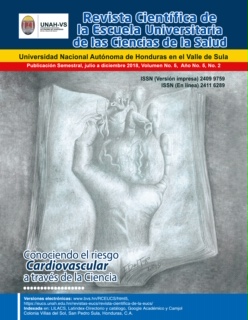CONTROL OF A PERIAPICAL CYST INCORPORATION OF CONE BEAM COMPUTED TOMOGRAPHY AND BIOPSY. CASE REPORT
DOI:
https://doi.org/10.5377/rceucs.v5i2.7647Keywords:
Apicectomy, Biopsy, Periapical Cyst, Xray computed Tomography, EndodonticsAbstract
The periapical cyst derives from the coating epithelium due to proliferation of small epithelial remnants of Malassez, for which, the present report points out the clinical and pathological characteristics of a periapical cyst, also the incorporation of cone bean computed tomography and the biopsy procedure as a method of diagnosis to rule out malignancy. Generally, in the intervention protocol dentists do not use biopsies or histopathological studies to lesions that appear to be benign. Based on the literature and experience of the clinical case, it is intended that the undergraduate student, general dentist and specialist, incorporate cone beam computed tomography and biopsy in the diagnosis. A 45 year-old female patient attends: Stomatological Clinics of career of dentistry of Universidad Nacional Autónoma de Honduras en el Valle de Sula (UNAH-VS). In the intraoral clinical examination, fractures of porcelain crowns are observed in the central incisor and lateral incisor, presence of fluctuating swelling in the middle palatal raphe, pain on palpation and presence of active fistula. The clinical procedere was the conventional endodontic therapy, apicectomy with retrograde obturation, removal of the cyst, anatomopathological and biopsy studies that corroborate the presumptive diagnosis of typical squamous epithelium densely infiltrated by lymphocytes, the chorion shows lymphoplasmacytic infiltrates of a periapical cyst. The patient evolved without complications, remaining asymptomatic; the radiographic control at 12 months evidenced bone tissue formation in the treated area.
Downloads
2166




